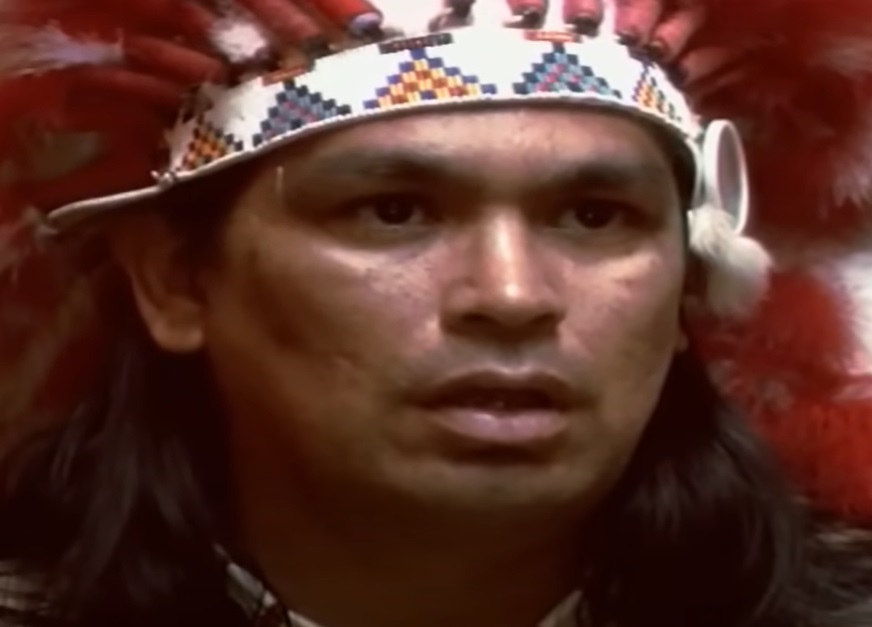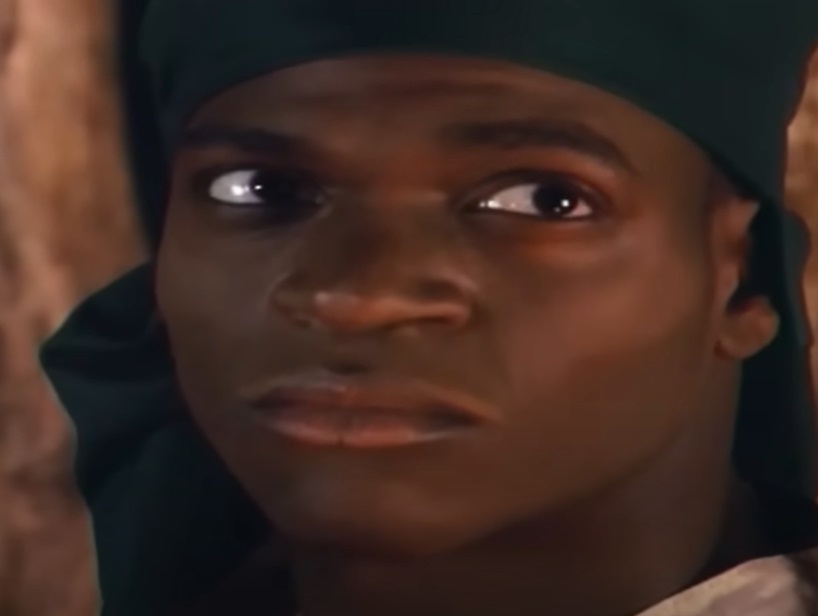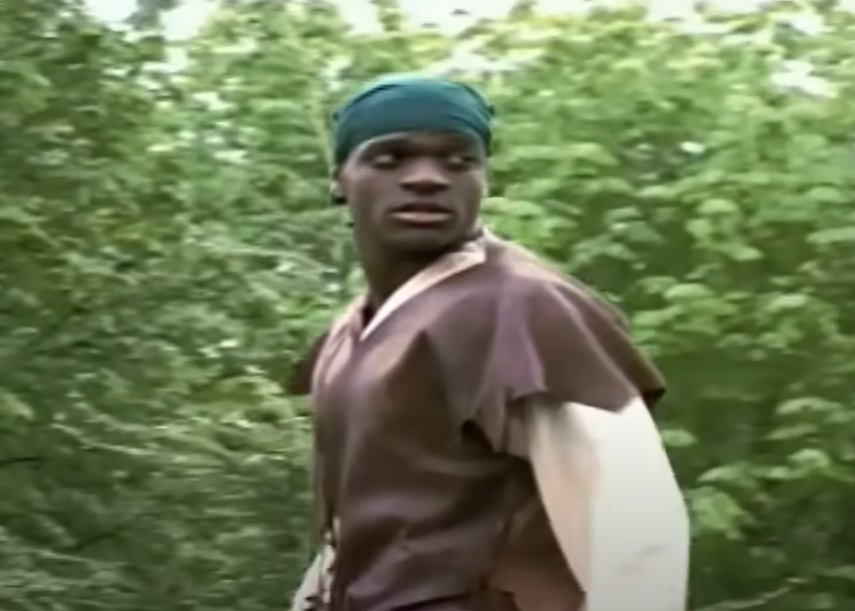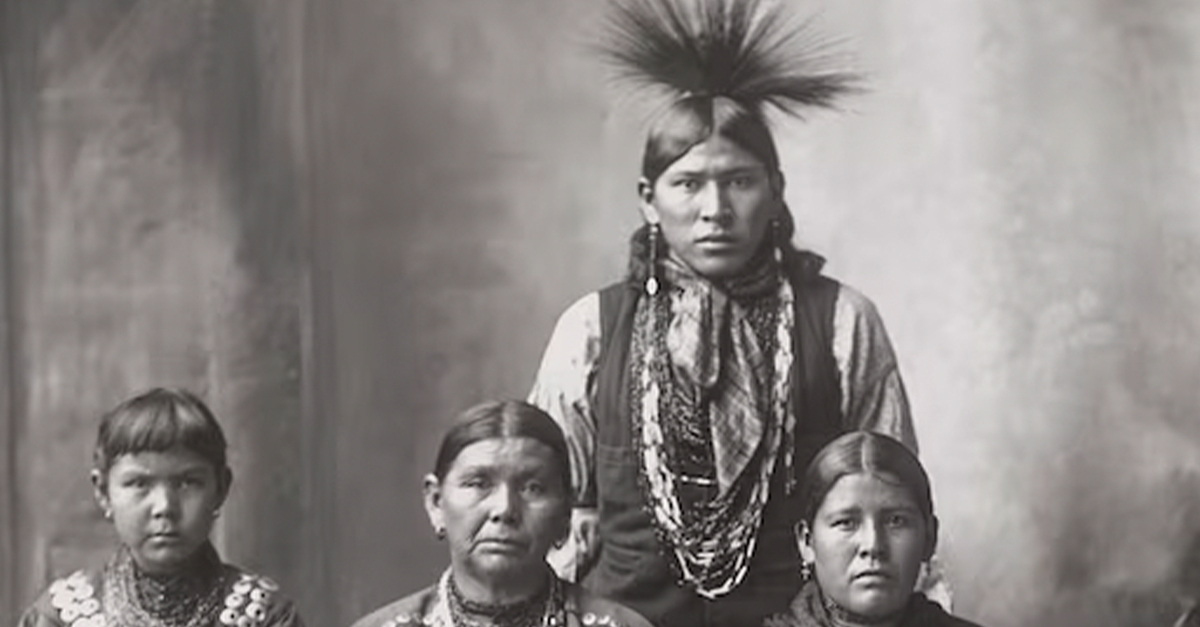America's Wildest Expedition
At the start of the 19th century, Captain Meriwether Lewis and Second Lieutenant William Clark embarked on one of the most important expeditions in American history—but the story of their difficult adventure is not for the faint of heart.
The Very Beginning
Before we can dive into the details of the Lewis and Clark expedition, we must first look at its roots. Why was this special expedition commissioned in the first place?
 Charles Willson Peale, Wikimedia Commons
Charles Willson Peale, Wikimedia Commons
The Louisiana Purchase
In 1803, the United States changed in a dramatic way. It bought the territory of Louisiana from the French First Republic. This became known as the Louisiana Purchase. This meant there was a lot of new land to explore.
However, the cogs in President Thomas Jefferson’s mind had begun turning long before the purchase went through.
 Rembrandt Peale, Wikimedia Commons
Rembrandt Peale, Wikimedia Commons
It Was Thomas Jefferson's Brainchild
It was Jefferson who commissioned what would become known as the Lewis and Clark Expedition. He wanted all of this new territory to be thoroughly scouted—but this was only the tip of the iceberg.
 Tony Fischer, CC BY 2.0, Wikimedia Commons
Tony Fischer, CC BY 2.0, Wikimedia Commons
Exploring The West
For Jefferson, the underlying reasons for this expedition were quite complex. Of course, one of the main goals was to map out the most efficient course across the western part of the continent, toward the Pacific Ocean. But the spirit of competition also lit a fire of urgency in America’s belly.
 National Geographic, Lewis & Clark: Great Journey West (2002)
National Geographic, Lewis & Clark: Great Journey West (2002)
Claiming Territory
This campaign would also allow the US to lay claim to territory, ideally before any European competitors tried to assert their own dominance in new lands. However, these weren’t the only motivations for the expedition.
 National Geographic, Lewis & Clark: Great Journey West (2002)
National Geographic, Lewis & Clark: Great Journey West (2002)
Collecting Data
On top of exploring this new territory, the expedition was also intended to collect important information about the land, including geography, topography, and biodiversity. All of this important data would be meticulously noted in logs, maps, and illustrations.
But perhaps one of the most important details had everything to do with the Native American tribes that occupied these lands first.
 National Geographic, Lewis & Clark: Great Journey West (2002)
National Geographic, Lewis & Clark: Great Journey West (2002)
Meeting With Native American Tribes
Though not as important as discovering an all-water route along the Missouri River, Jefferson also expected the campaign to engage with the Native American tribes—some of whom they had never come in contact with before—and secure trade relations with them.
But as we’ll eventually see, this wasn’t always an easy task.
He Sent A Secret Message
At the very beginning of 1803, Jefferson set the wheels in motion by sending a secret message to the US Congress, detailing the proposition for this specific expedition. The following month, the Senate and House gave their seal of approval—and the plans for the campaign began rolling out in earnest.
 William Russell Birch, Wikimedia Commons
William Russell Birch, Wikimedia Commons
Two Captains
Jefferson appointed Army Captain Meriwether Lewis as the leader of the Corps of Discovery. Following this, Lewis brought William Clark on board as his co-leader. They would eventually be joined by a crew of around 40 men. However, they weren’t quite ready to start their adventure just yet.
 National Geographic, Lewis & Clark: Great Journey West (2002)
National Geographic, Lewis & Clark: Great Journey West (2002)
Educating The Leader
Jefferson wanted to ensure that the leader of this expedition was prepared for whatever challenges the future might hold—and so Meriwether Lewis had to be taught a vast array of new skills. This jaw-dropping education included everything from medicinal cures to navigation to the preservation of specimens, and beyond.
However, this was not to say that Lewis wasn’t already an incredibly bright man. After all, there was a reason Jefferson had selected him in the first place.
 Bureau of Engraving and Printing & Smithsonian Institution, Wikimedia Commons
Bureau of Engraving and Printing & Smithsonian Institution, Wikimedia Commons
The Perfect Man For The Job
Referencing his decision to appoint Lewis, Jefferson shared: “It was impossible to find a character who to a complete science in botany, natural history, mineralogy & astronomy, joined the firmness of constitution & character, prudence, habits adapted to the woods & a familiarity with the Indian manners and character, requisite for this undertaking. All the latter qualifications Capt Lewis has”.
 National Geographic, Lewis & Clark: Great Journey West (2002)
National Geographic, Lewis & Clark: Great Journey West (2002)
Reading The Keelboat
Things moved quite quickly in 1803, and by the end of the summer, the keelboat intended to kick off this venture was finally ready. As the vessel was constructed in Pittsburgh, this was where Lewis met a very important member of the team…
 National Geographic, Lewis & Clark: Great Journey West (2002)
National Geographic, Lewis & Clark: Great Journey West (2002)
The Expedition's Trusty Dog
On top of readying the boat, Lewis procured the cherry on top—a Newfoundland dog named Seaman. With a reputation for being excellent swimmers, Newfoundland dogs were known to be brought aboard fishing vessels. In fact, they could also be a life-saving asset, helping out in the event of a water rescue. But that wasn’t all.
 Deisenbe, CC BY-SA 4.0, Wikimedia Commons
Deisenbe, CC BY-SA 4.0, Wikimedia Commons
The Team's Only Pet
During the expedition, Seaman would inevitably earn his spot as an important member of the crew, accompanying the men on hunting missions. If they ever came face to face with a dangerous animal, such as a bear, Seaman would be, at the very least, one line of defense.
Little did Lewis know at the time, Seaman would be the only furry pet to see this expedition to the very end.
 NOAA Photo Library, Wikimedia Commons
NOAA Photo Library, Wikimedia Commons
They Waited The Winter Out
In October 1803, Lewis and the keelboat arrived in Louisville, Kentucky to join forces with his co-leader, William Clark. But it wasn’t until the next year that the Corps of Discovery finally kicked off their expedition. For the duration of the winter months, they stayed somewhere very special.
 National Geographic, Lewis & Clark: Great Journey West (2002)
National Geographic, Lewis & Clark: Great Journey West (2002)
The Set Up Camp
Close to what we know today as Wood River, Illinois, the crew stayed at Camp Dubois—a military camp that they called home for several months as they awaited the official beginning of the Lewis and Clark Expedition. But when that fateful day finally arrived, they were completely prepared.
 Kbh3rd, CC BY-SA 3.0, Wikimedia Commons
Kbh3rd, CC BY-SA 3.0, Wikimedia Commons
They Carried Silver Medals
The expedition certainly thought of everything. For instance, the men were equipped with silver medals made by the US Mint. These medals not only boasted Thomas Jefferson’s likeness but also bore an important message—one of peace and fellowship.
As the team came into contact with Indigenous tribes, they were meant to give them these medals. Of course, not all their provisions came with such a positive message.
 Cliff, CC BY 2.0, Wikimedia Commons
Cliff, CC BY 2.0, Wikimedia Commons
They Were Ready For A Fight
Peace medals were one thing, but the expedition also made sure to ready themselves on the weapons front: flintlock firearms, rifles, and blades. Other essentials included cartography and blacksmithing equipment, as well as medical supplies, flags, and gifts.
 National Geographic, Lewis & Clark: Great Journey West (2002)
National Geographic, Lewis & Clark: Great Journey West (2002)
The Expedition Begins
On May 14, 1804, the Lewis and Clark Expedition finally began moving up the Missouri River, leaving Camp Dubois and eventually picking up Captain Lewis in St Charles, Missouri. But their adventure didn’t exactly kick off smoothly.
 Americasroof, CC BY-SA 3.0, Wikimedia Commons
Americasroof, CC BY-SA 3.0, Wikimedia Commons
Off To A Rocky Start
Headed for the Rockies, the men had to face the turbulence of the Missouri River. The current was their worst enemy, and while the keelboat’s sails sometimes worked, the crew often had to put in some serious hard labor—even pushing or rowing the boat at times.
However, it wasn’t until a few months into the expedition that a real tragedy struck.
 National Geographic, Lewis & Clark: Great Journey West (2002)
National Geographic, Lewis & Clark: Great Journey West (2002)
The First Tragedy
On August 20, 1804, one of the first men to join the Corps of Discovery met a devastating end. Sergeant Charles Floyd perished from what was likely severe appendicitis. The team buried his body in what we know today as Sioux City, Iowa—and even named a nearby river after him.
But there were more challenges to come.
 Benjamin Trott, Wikimedia Commons
Benjamin Trott, Wikimedia Commons
They Were Colonizers
Dealing with the Native American tribes (and making keen observations about their way of life) was one of the expedition’s goals. As a colonizing force, they believed that all of the land in the northwest belonged to the United States—and it was part of their mission to communicate this to the tribes. But they did so in a shocking way.
 National Geographic, Lewis & Clark: Great Journey West (2002)
National Geographic, Lewis & Clark: Great Journey West (2002)
They Introduced Them To A New Sovereign
The expedition had to make the tribes understand that they had a new sovereign in George Washington—or “their great father”. However, the humbling reality of it all was that the Lewis and Clark expedition would have likely failed without the help of the Native American tribes they encountered.
 National Geographic, Lewis & Clark: Great Journey West (2002)
National Geographic, Lewis & Clark: Great Journey West (2002)
They Owed Their Lives To The Native American Tribes
The team had the Native Americans to thank for their survival—especially in the face of the vicious winter months and the daunting challenge of navigating the Rocky Mountains. But these weren't the only things they relied on them for.
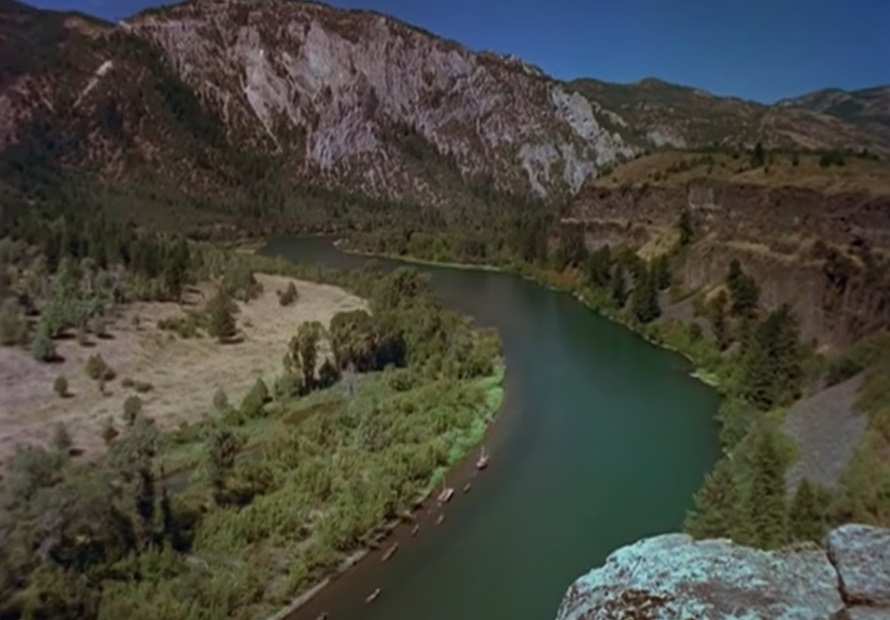 National Geographic, Lewis & Clark: Great Journey West (2002)
National Geographic, Lewis & Clark: Great Journey West (2002)
They Knew How To Survive
Their relations with as many as 24 Native American nations brought them into contact with people who knew the surrounding wilderness like the back of their hands and could provide them with much-needed food. This allowed them to dodge the threat of starvation.
However, there was always the possibility of meeting with a defensive—and even dangerous—Native tribe.
 National Geographic, Lewis & Clark: Great Journey West (2002)
National Geographic, Lewis & Clark: Great Journey West (2002)
The Brought Gifts
The expedition wanted to avoid conflict as much as possible. Therefore, they packed gifts, using them as peaceful offerings when entering into negotiations with the Native American chiefs. These included objects like ribbons, mirrors, needles, and medals, among other things.
Though many of the tribes were very receptive and amiable, there was one unforgettable encounter.
 National Geographic, Lewis & Clark: Great Journey West (2002)
National Geographic, Lewis & Clark: Great Journey West (2002)
A Hostile Tribe
On September 25, 1804, the expedition came into contact with the Teton-Sioux tribe—or the Lakota people. Their chiefs were Black Buffalo and Tortohongar. This time, things got shockingly hostile.
 National Geographic, Lewis & Clark: Great Journey West (2002)
National Geographic, Lewis & Clark: Great Journey West (2002)
They Demanded A Tribute
The Lakota people had seven tribes and a scary reputation among foreigners who had traveled down the Missouri River. Before allowing strangers onto their lands and safe passage, they required some kind of tribute or gifts.
However, when the group first met with the chiefs, they made a dire mistake.
 National Geographic, Lewis & Clark: Great Journey West (2002)
National Geographic, Lewis & Clark: Great Journey West (2002)
He Made A Grievous Mistake
Unfortunately, Captain Lewis accidentally insulted Tortohongar (also known as the Partisan chief). Lewis immediately offered up some gifts, which enraged the chief. But this wasn’t the only slip-up.
 National Geographic, Lewis & Clark: Great Journey West (2002)
National Geographic, Lewis & Clark: Great Journey West (2002)
They Didn't Have Their Interpreter With Them
Unfortunately, the expedition’s Sioux language interpreter was missing from these negotiations, preoccupied with a different tribe. Therefore, communication between both parties was extremely rocky, to say the least.
 National Geographic, Lewis & Clark: Great Journey West (2002)
National Geographic, Lewis & Clark: Great Journey West (2002)
They Wanted More Gifts
To make matters worse, the Lakota chiefs were not pleased with the gifts presented by the expedition. They wanted more gifts for their warriors—but not just any gift.
They Wanted The Expedition's Boat
It quickly became clear what kind of gift the Partisan tribe had in mind when one of its warriors began to handle the expedition’s boat. That’s when the growing tension reached a breaking point.
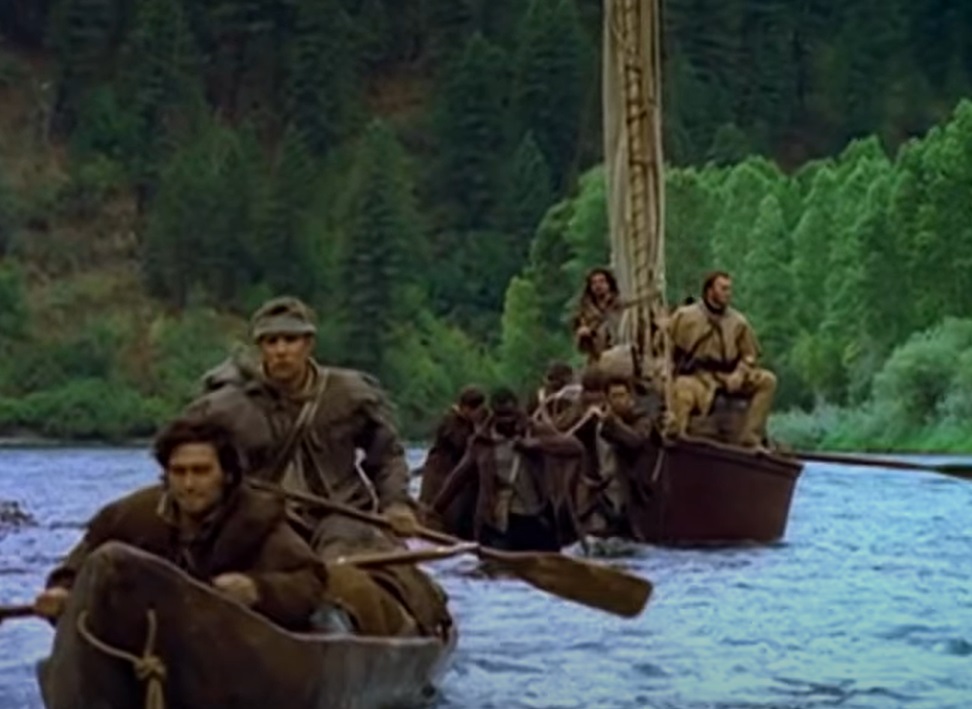 National Geographic, Lewis & Clark: Great Journey West (2002)
National Geographic, Lewis & Clark: Great Journey West (2002)
They Almost Drew Blood
Captain Clark responded by going on the defense, even threatening to use arms. Similarly, Captain Clark drew his sword, ready to engage in combat. This could have easily escalated into a bloody battle, but luck was on their side.
 National Geographic, Lewis & Clark: Great Journey West (2002)
National Geographic, Lewis & Clark: Great Journey West (2002)
Black Buffalo Shut It Down
Thankfully, Black Buffalo called off his warriors and they retreated. Following this close call, things started looking up. After giving the tribes satisfactory gifts, including a bottle of whiskey and tobacco, the expedition was finally able to continue on their journey. Of course, the men did not come away with a positive judgment of the Lakota people.
 National Geographic, Lewis & Clark: Great Journey West (2002)
National Geographic, Lewis & Clark: Great Journey West (2002)
The Captain Called Them The "Vilest Miscreants"
Writing about their troubles with this particular tribe, Captain Clark had some fighting words for them. He called them the "vilest miscreants of the savage race" and "warlike".
 National Geographic, Lewis & Clark: Great Journey West (2002)
National Geographic, Lewis & Clark: Great Journey West (2002)
Another Winter
In November of 1804, the Corps of Discovery located the perfect place to hunker down for the winter. They built Fort Mandan across the river from a Mandan village. But this wasn't all they had to do.
 National Geographic, Lewis & Clark: Great Journey West (2002)
National Geographic, Lewis & Clark: Great Journey West (2002)
They Needed A New Team Member
The group also needed to recruit a new member—an interpreter who would be able to negotiate with the tribal nations come spring. After interviewing a number of trappers, they settled on a man named Toussaint Charbonneau.
 National Geographic, Lewis & Clark: Great Journey West (2002)
National Geographic, Lewis & Clark: Great Journey West (2002)
The Famous Sacagawea
Charbonneau claimed fluency in multiple languages. He also came with a bonus asset: His pregnant wife was a Native American who knew how to speak Shoshone. Her name was Sacagawea.
 Edgar Samuel Paxson, Wikimedia Commons
Edgar Samuel Paxson, Wikimedia Commons
She Had A Nightmarish Birth
Just a few weeks after joining the expedition, on February 11, 1805, Sacagawea's labor pains began—but she had a difficult time. To help with the birth, her husband came up with a bizarre idea.
She Consumed A Rattlesnake's Rattle
Charbonneau thought that a concoction made with a rattlesnake's rattle would help Sacagawea's labor—and lo and behold, Captain Lewis just happened to have this special ingredient on hand.
She Welcomed A Baby Boy
Not long after the struggling mother ingested this potion, the baby finally made his grand appearance—a boy named Jean Baptiste Charbonneau. Little did the crew know at the time, but this young mother would prove to be a powerful asset to the expedition.
They Had To Manually Move The Boats
In April of that year, the expedition packed up and set off once more, but once again, they faced an aggressive current. The boat often had to be dragged forward by the men as they moved forward along the riverbanks. However, the next month, a near-disaster came to pass.
 National Geographic, Lewis & Clark: Great Journey West (2002)
National Geographic, Lewis & Clark: Great Journey West (2002)
Their Boat Capsized
On May 14, 1805, one of the boats capsized, causing some very valuable objects to tumble out of it—important records and journals. However, there was one hero who came to the rescue. None other than Sacagawea.
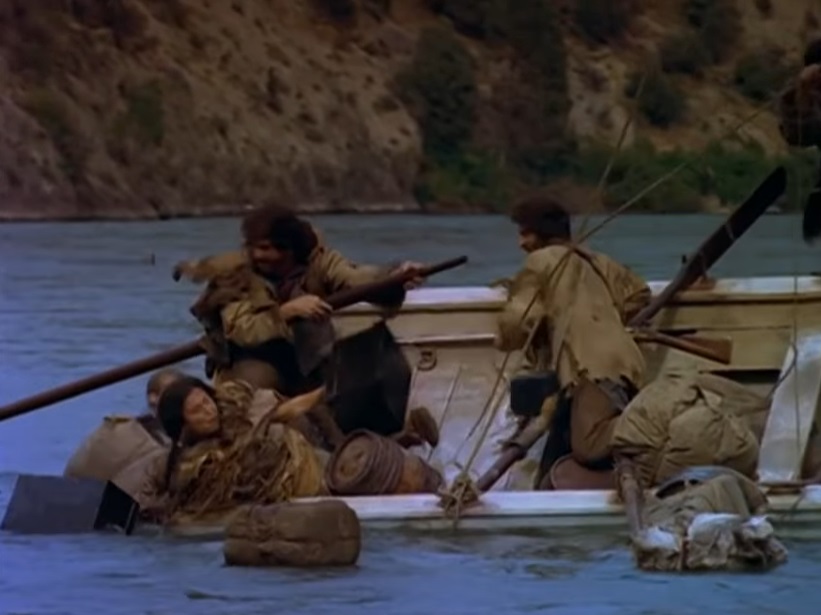 National Geographic, Lewis & Clark: Great Journey West (2002)
National Geographic, Lewis & Clark: Great Journey West (2002)
They Named A River After Her
It was Sacagawea who scooped up those records before they were lost forever. The commanders were bowled over by how she'd sprung so readily into action. Just six days later, they rewarded her with a special honor, naming the very river after her.
But this wouldn't be the last time she saved the day.
 National Geographic, Lewis & Clark: Great Journey West (2002)
National Geographic, Lewis & Clark: Great Journey West (2002)
She Was An Excellent Translator
In August 1805, the Corps of Discovery met with a Shoshone tribe. This was territory Sacagawea knew well, as this is where she came from. Therefore, it was Sacagawea who translated for the team as they negotiated a special trade of horses in exchange for the right to cross the Rocky Mountains. This led to an unbelievable surprise.
Turns out, the leader of this Shoshone tribe just happened to be Sacagawea's brother, Cameahwait.
She Made Them Seem Harmless
On top of being a translator, the fact that Sacagawea was a part of the expedition signaled to other tribes that the crew meant no harm. This was because warring Indigenous parties would have never included an Indigenous mother and child.
The Captain Liked Her
Among the Corps of Discovery, Sacagawea became known as "Janey," nicknamed as such by Captain Clark. In fact, Clark had such a soft spot for her—he even wanted to provide her son with an education.
However, Sacagawea wasn't the only unique member of the crew.
The Expedition's Tragic Enslaved Man
Captain Clark brought his own enslaved worker along on the Lewis and Clark expedition—a Black man named York. And just like Sacagawea, he was an essential part of the expedition's overall success.
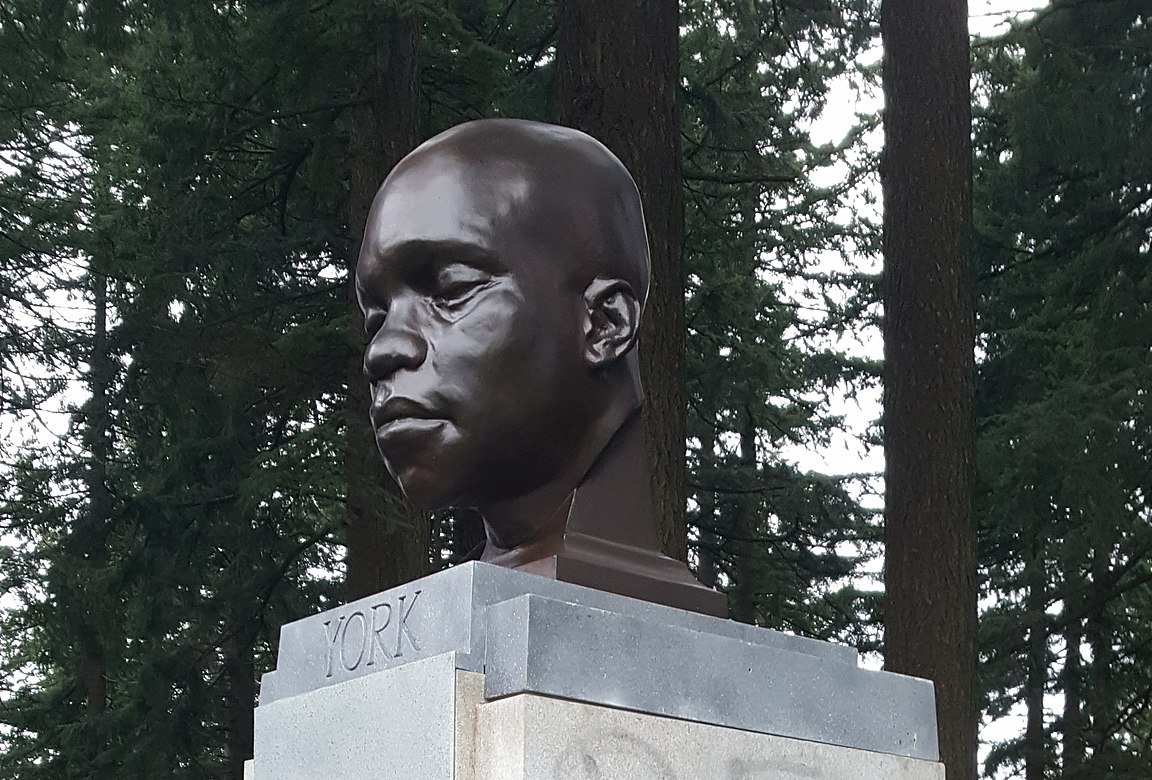 Another Believer, CC BY-SA 4.0, Wikimedia Commons
Another Believer, CC BY-SA 4.0, Wikimedia Commons
He Was A Source Of Curiosity
To the Native Americans, York was a downright curiosity. They had never laid eyes on a Black man before, and his presence was a great source of interest for them. He was also a very strong member of the crew, who helped with manual labor and went on hunting missions for the expedition.
But though he did remarkable work, his owner Captain Clark did nothing to repay him.
He Wasn't Valued
When the expedition eventually came to an end, members of the Corps of Discovery reaped the rewards of their accomplishments. Many of them became owners of hundreds of acres of land, and received high payment for their services. But how Captain Clark treated York was despicable.
He Only Saw His Wife For A Short Time
Not only did York receive no form of payment, but Captain Clark didn't even give him his freedom. To add insult to injury, the captain went even further, only permitting York to visit his wife for a short time before sending him to Missouri. And tragically, his life did not improve from there.
He Stayed In Bondage
Sadly, York probably never saw his wife again after their brief interlude. What's more? A decade after the Lewis and Clark expedition wrapped up, York was still in bondage and serving the Clark family.
They Slept With A Lot Of Indigenous Women
Now, the Corps of Discovery was not an abstinent bunch. Intimate relations with Native American women were actually very common. Because these Indigenous folks believed that sensual intimacy was an exchange of spiritual power, men willingly shared their wives, believing that the white men's power could be gained.
However, this didn't come without its consequences.
 National Geographic, Lewis & Clark: Great Journey West (2002),
National Geographic, Lewis & Clark: Great Journey West (2002),
Venereal Disease Ran Rampant
Because foreign travelers from Britain and France had spread venereal disease among the Native American tribes, the Corps of Discovery became vulnerable to picking up such afflictions as syphilis and gonorrhea.
 National Geographic, Lewis & Clark: Great Journey West (2002)
National Geographic, Lewis & Clark: Great Journey West (2002)
It Couldn't Be Cured
Unfortunately, these diseases were not curable at the time, and Captain Lewis and Captain Clark could only treat their infected men with what they stocked in their medical cabinet, which was usually mercury pills.
 National Geographic, Lewis & Clark: Great Journey West (2002)
National Geographic, Lewis & Clark: Great Journey West (2002)
Sacagawea's Husband Gave Her A Disease
Even the beloved Sacagawea likely had gonorrhea—a disease most likely given to her by her husband, Toussaint Charbonneau. It is also the probable explanation for why she experienced a terrifying illness during the summer of 1805.
Her Alarming Illness
Just a few months before they reached Shoshone territory, Sacagawea began feeling terribly unwell. Her symptoms included a fever, breathing issues, and a weak pulse. It was also said that she had an "alarming twitching of her fingers and arms".
Historians Have A Theory
Medical historians have since suggested that her severe illness could have been caused by chronic inflammatory disease or gonorrhea. Luckily, she managed to survive.
They Almost Starved Crossing The Rockies
The Lewis and Clark expedition struggled to make it through the Rocky Mountains, with their food rations running dangerously low. Once again, Sacagawea helped out when they finally made it to a more clement area.
 National Geographic, Lewis & Clark: Great Journey West (2002)
National Geographic, Lewis & Clark: Great Journey West (2002)
She Fed Them
The arduous journey over the Rocky Mountains completely drained the men. To help them recover their strength, Sacagawea helped the crew search for camas roots, which she then cooked for their meals. Somehow, she had even more to give.
She Gave Up Her Own Belongings
When the expedition reached the Pacific Coast, they came upon an important trading opportunity at the mouth of the Columbia River. They found the perfect gift for President Thomas Jefferson—a fur robe. It was Sacagawea who offered up a tradable piece of her own—a beaded belt—so that they could secure the robe for Jefferson.
They Finally Reached The Pacific Ocean
On November 7, 1805, the Lewis and Clark Expedition saw their ultimate goal shining on the horizon—the Pacific Ocean. Two weeks later, they finally made it... just in time for another harsh winter.
 National Geographic, Lewis & Clark: Great Journey West (2002)
National Geographic, Lewis & Clark: Great Journey West (2002)
They Didn't Have Enough Money For Food
Camped on the north side of the Columbia River, the group faced the threat of starvation once again. Unfortunately, the elks had made off into the mountains and could no longer be hunted. With their finances also dwindling, they couldn't even turn to the tribes for assistance.
 National Geographic, Lewis & Clark: Great Journey West (2002)
National Geographic, Lewis & Clark: Great Journey West (2002)
They Spent One Last Winter At Fort Clatsop
Therefore, in order to survive the winter, the expedition had to switch things up and set up camp on the south side of the river instead. It became known as Fort Clatsop.
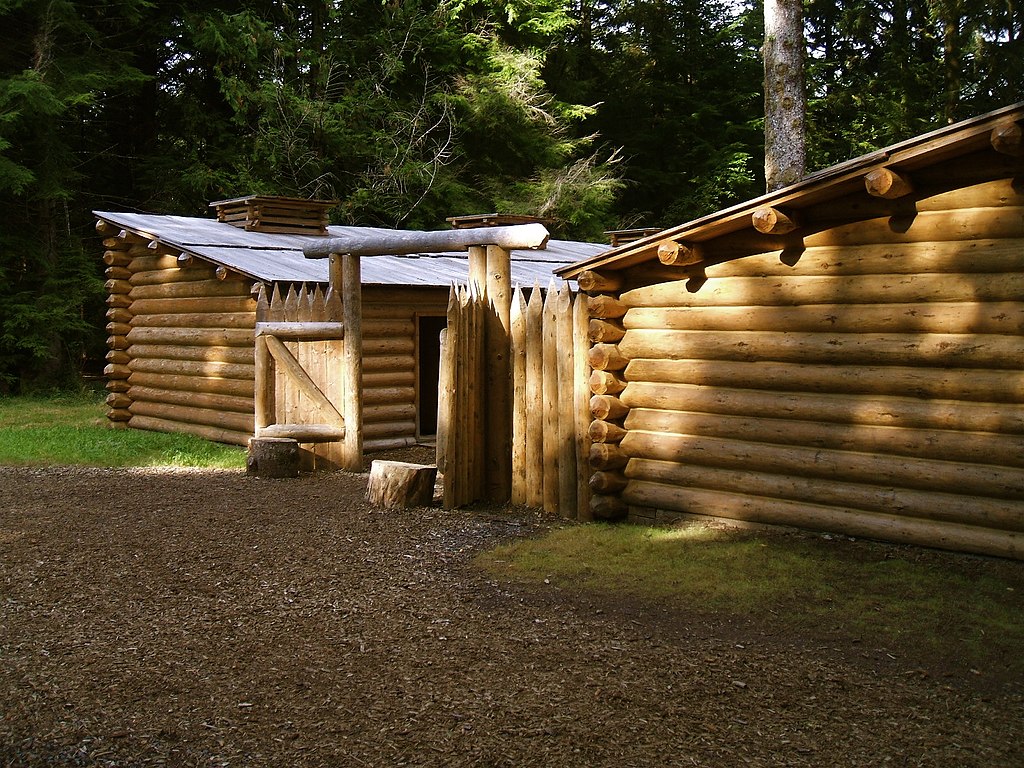 Glenn Scofield Williams, CC BY 2.0, Wikimedia Commons
Glenn Scofield Williams, CC BY 2.0, Wikimedia Commons
Heading Home
When spring finally arrived, it was time to return home. The Discovery Corps traveled by canoe and by foot, setting off on March 23, 1806. But though their mission was a success, fate still had some twists in store for them.
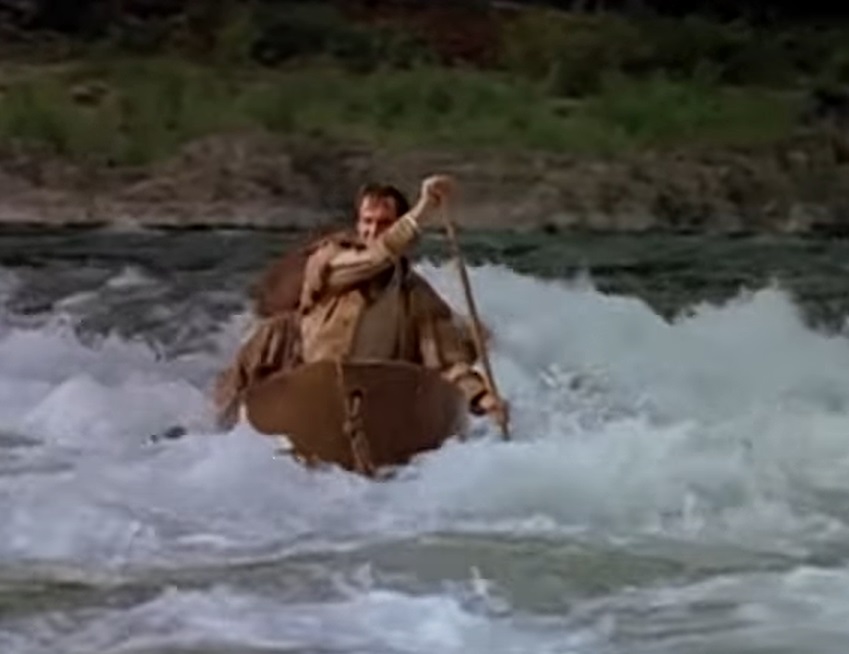 National Geographic, Lewis & Clark: Great Journey West (2002)
National Geographic, Lewis & Clark: Great Journey West (2002)
They Parted Ways
On July 3, the team made the decision to split up. This way, Captain Lewis could visit the Marias River, while Captain Clark ended up crossing the Crow tribe's land. Both captains found themselves in scary situations.
 National Geographic, Lewis & Clark: Great Journey West (2002)
National Geographic, Lewis & Clark: Great Journey West (2002)
They Had A Gruesome Encounter
Captain Lewis only had a team of four men, and when they met some members of the Blackfeet nation, their explorations took a dark turn. After darkness fell, some of the Blackfeet men attempted to pilfer their arms. A fight ensued—and the consequences were harrowing. Two of the Blackfeet men lost their lives.
Captain Clark, on the other hand, had his own puzzling situation to attend to.
 National Geographic, Lewis & Clark: Great Journey West (2002)
National Geographic, Lewis & Clark: Great Journey West (2002)
A Mysterious Disappearance
While on the Crow tribe's land, Clark made a wild discovery: Half of their horses had mysteriously vanished. Even more curious was the fact they had not witnessed anyone from the Crow tribe in the vicinity.
When the two finally reunited on August 11, there was one more dramatic event to round off their expedition.
 National Geographic, Lewis & Clark: Great Journey West (2002)
National Geographic, Lewis & Clark: Great Journey West (2002)
Captain Lewis Took A Bullet
The Lewis and Clark expedition really ended things with a bang. When Lewis's group rejoined Clark's, one of Clark's men made an awful mistake. Thinking that Lewis was an elk, hunter Pierre Cruzatte accidentally took aim at his own captain and pulled the trigger. Thankfully, in a stroke of luck, the bullet only hit Lewis in the thigh.
 National Geographic, Lewis & Clark: Great Journey West (2002)
National Geographic, Lewis & Clark: Great Journey West (2002)
The End Of The Mission
Now following the Missouri River, it was time to bring this expedition to an end. On September 23, 1806, they finally set foot in St Louis. Their mission was over—and they had accomplished everything they had set out to do.
 National Geographic, Lewis & Clark: Great Journey West (2002)
National Geographic, Lewis & Clark: Great Journey West (2002)


